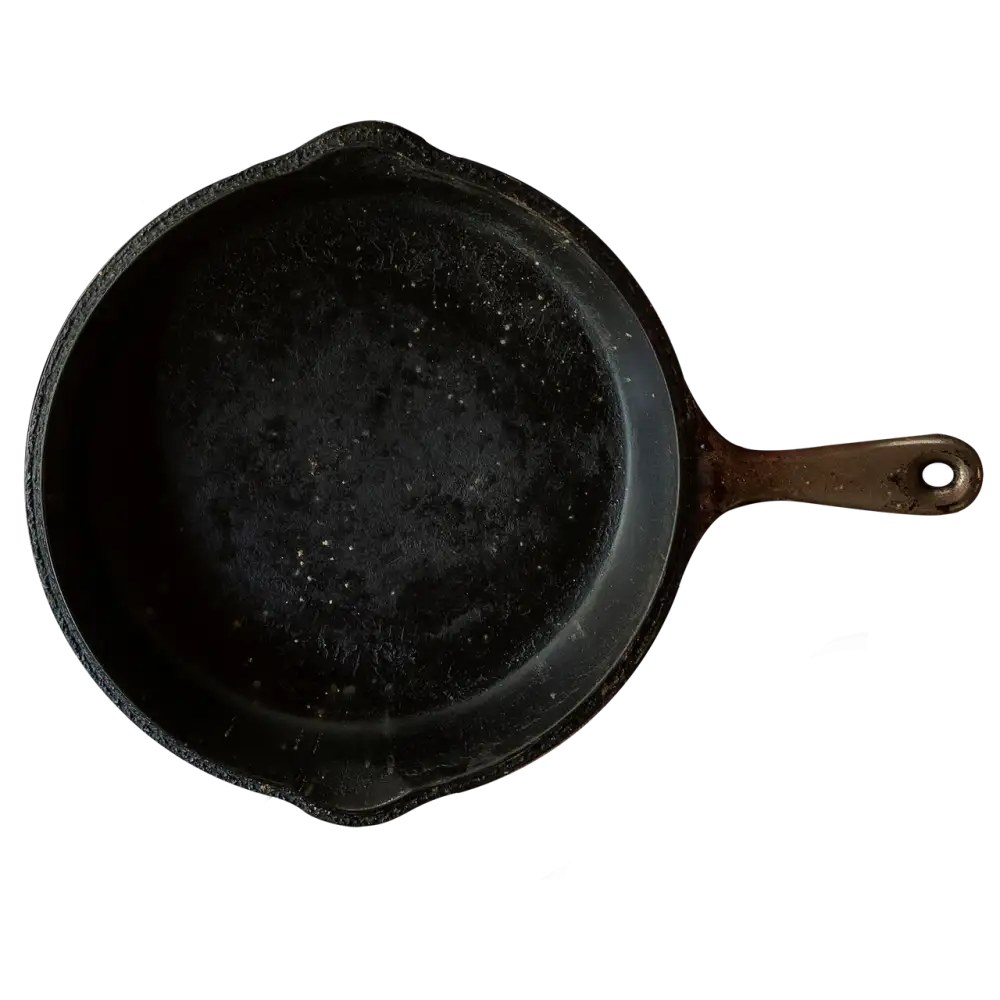Master the Art of Cleaning Your Cast Iron Skillet with These Proven Tips

- Gather materials: coarse salt, sponge, dish soap, paper towels.
- Rinse the skillet with hot water while it's still warm.
- Sprinkle coarse salt on the skillet to act as a scrubbing agent.
- Use a sponge to scrub the skillet, focusing on stubborn spots.
- Rinse the skillet thoroughly with hot water.
- Dry the skillet completely with paper towels.
- Place the skillet on the stove over low heat to evaporate any remaining moisture.
- Once dry, apply a thin layer of oil to season the skillet and prevent rust.
Gather materials: coarse salt, sponge, dish soap, paper towels.
Before you begin the cleaning process, make sure you have all the necessary materials on hand. You will need coarse salt, a sponge, dish soap, and paper towels. These items are essential for effectively cleaning your cast iron skillet without damaging its seasoned surface. Once you have gathered these materials, you are ready to start restoring your skillet to its optimal condition.
Rinse the skillet with hot water while it's still warm.
Rinsing your cast iron skillet with hot water while it's still warm is a crucial step in the cleaning process. The heat helps to loosen any food particles stuck to the surface, making them easier to remove. Avoid using soap at this stage as it can strip away the skillet's seasoning. Gently scrub the skillet with a soft sponge to dislodge any remaining debris. This initial rinse sets the foundation for effectively cleaning and maintaining your cast iron skillet for years to come.
Sprinkle coarse salt on the skillet to act as a scrubbing agent.
Sprinkling coarse salt on the skillet is a crucial step in cleaning your cast iron effectively. The coarse texture of the salt helps to act as a gentle abrasive, loosening food particles and grime without damaging the skillet's seasoning. This natural scrubbing agent works wonders on stubborn spots, making it easier to remove any stuck-on residue. Additionally, salt is non-toxic and safe to use on cookware, ensuring that your cast iron remains in top condition for years to come.
Use a sponge to scrub the skillet, focusing on stubborn spots.
Using a sponge is an effective way to scrub your cast iron skillet, especially when dealing with stubborn spots that won't easily come off. The coarse salt acts as an abrasive agent, while the sponge helps to dislodge any stuck-on food particles. Make sure to apply gentle pressure and focus on areas that require extra attention. This step will help restore the skillet's surface without damaging its seasoning or patina.
Rinse the skillet thoroughly with hot water.
After scrubbing the skillet with coarse salt, it's crucial to rinse it thoroughly with hot water. This step helps to remove any leftover food particles and salt residue from the skillet's surface. Make sure to use hot water as it helps to loosen any remaining debris and aids in cleaning the skillet effectively. Thorough rinsing is essential to ensure that the skillet is clean and ready for drying.
Dry the skillet completely with paper towels.
After rinsing the skillet thoroughly with hot water, it's essential to dry it completely to prevent rust. Use paper towels to absorb all moisture inside and out. Make sure to reach all corners and crevices of the skillet, ensuring no water is left behind. Drying the skillet thoroughly also helps in maintaining its seasoning and prolongs its lifespan. Once dried, proceed to the next step of placing it on the stove over low heat to evaporate any remaining moisture.
Place the skillet on the stove over low heat to evaporate any remaining moisture.
After drying the skillet with paper towels, it's essential to ensure there is no remaining moisture before storing it. To achieve this, place the skillet on the stove over low heat. The gentle heat will help evaporate any lingering water droplets that may lead to rusting if left unchecked. Allow the skillet to warm up gradually for a few minutes, ensuring all surfaces are heated evenly. This step is crucial in maintaining the integrity of your cast iron skillet and prolonging its lifespan.
Once dry, apply a thin layer of oil to season the skillet and prevent rust.
Once your cast iron skillet is completely dry, it's crucial to season it to maintain its non-stick surface and prevent rust. To do this, apply a thin layer of oil to the entire skillet, including the handle and exterior. Use a paper towel to spread the oil evenly and remove any excess. Place the skillet upside down in a preheated oven at 350°F (175°C) for one hour. This process polymerizes the oil, creating a protective layer that enhances the skillet's natural non-stick properties and prevents rust formation. Remember to let the skillet cool before storing it. Regular seasoning will ensure your cast iron skillet lasts for generations to come.
Published: 01. 05. 2024
Category: Home



